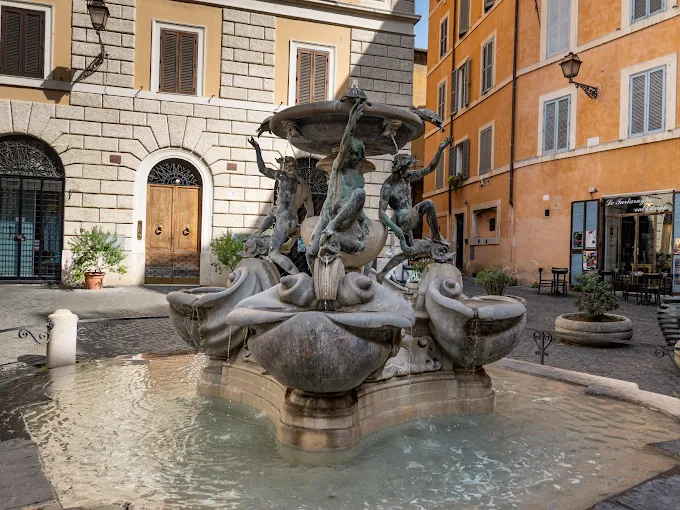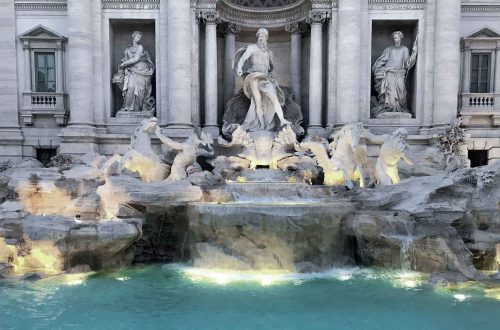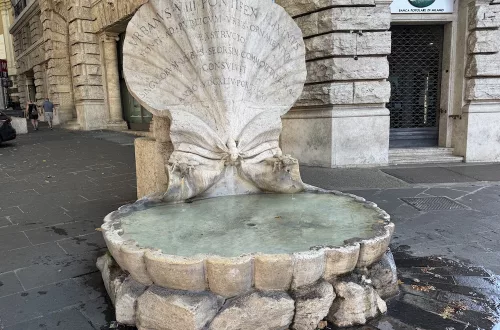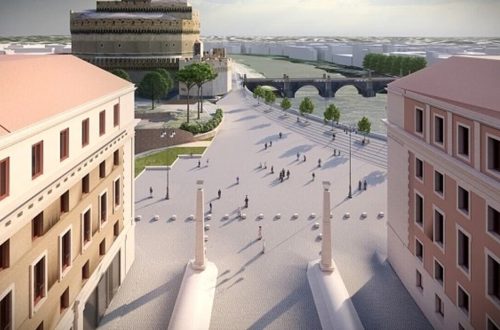
Fontana delle Tartarughe
The Fontana delle Tartarughe: A Jewel of the Roman Renaissance
Tucked away in the quiet, picturesque Piazza Mattei in Rome’s Jewish Ghetto, the Fontana delle Tartarughe (Fountain of the Turtles) is one of the city’s most enchanting and elegant Renaissance fountains. Though modest in size compared to the grand fountains of Piazza Navona or the Trevi Fountain, it captivates with its intricate design, rich symbolism, and unique charm.
A Masterpiece of Form and Function
Commissioned in the late 16th century by Duke Muzio Mattei, a member of a powerful Roman noble family, the fountain was designed by architect Giacomo della Porta and sculpted by Taddeo Landini between 1581 and 1588. It was part of a larger urban renewal project aimed at providing public water access through the Acqua Vergine aqueduct, which had recently been restored.
The fountain features four graceful bronze youths poised delicately on marble dolphins, lifting one leg in a balletic motion. Their elegant gestures draw the eye upward to the centerpiece: four small turtles perched on the basin above. These turtles—added later, likely in 1658—are traditionally attributed to Gian Lorenzo Bernini, though this remains unconfirmed.
A Touch of Myth and Legend
Like many Roman landmarks, the Fontana delle Tartarughe is surrounded by legend. One popular story recounts that Duke Mattei had the fountain built overnight to impress his future father-in-law, showcasing the family’s wealth and influence. The following morning, he allegedly invited his guest to his window to admire the completed masterpiece. As a final flourish, he then sealed the window, which remains closed to this day, as a symbol of the one-time performance.
An Artistic Dialogue
What makes the Fontana delle Tartarughe so compelling is its sense of movement and balance. The interplay between the marble and bronze elements, the flowing water, and the upward sweep of the figures create a harmonious composition that seems almost theatrical. The addition of the turtles—though small—introduces a playful and unexpected twist to an otherwise classical structure.
The sculpture is also an early example of Mannerism, a style that favored elegance, complexity, and a certain artificiality over the more naturalistic forms of the High Renaissance. The elongated poses of the figures and the dramatic tension between their static stance and the flowing water make it a quintessential piece of its time.
A Hidden Gem Worth Discovering
While the Fontana delle Tartarughe may not attract the crowds of Rome’s more famous sites, it offers a rare glimpse into the artistry, stories, and urban beauty of Renaissance Rome. Nestled in a quiet square surrounded by palaces and cobblestone streets, it invites the curious traveler to pause, reflect, and admire the fusion of myth, art, and history.
Whether you’re a first-time visitor or a seasoned explorer of Rome, this small fountain, with its graceful boys and bronze turtles, is a reminder that beauty in the Eternal City often lies just off the beaten path.
![]()




